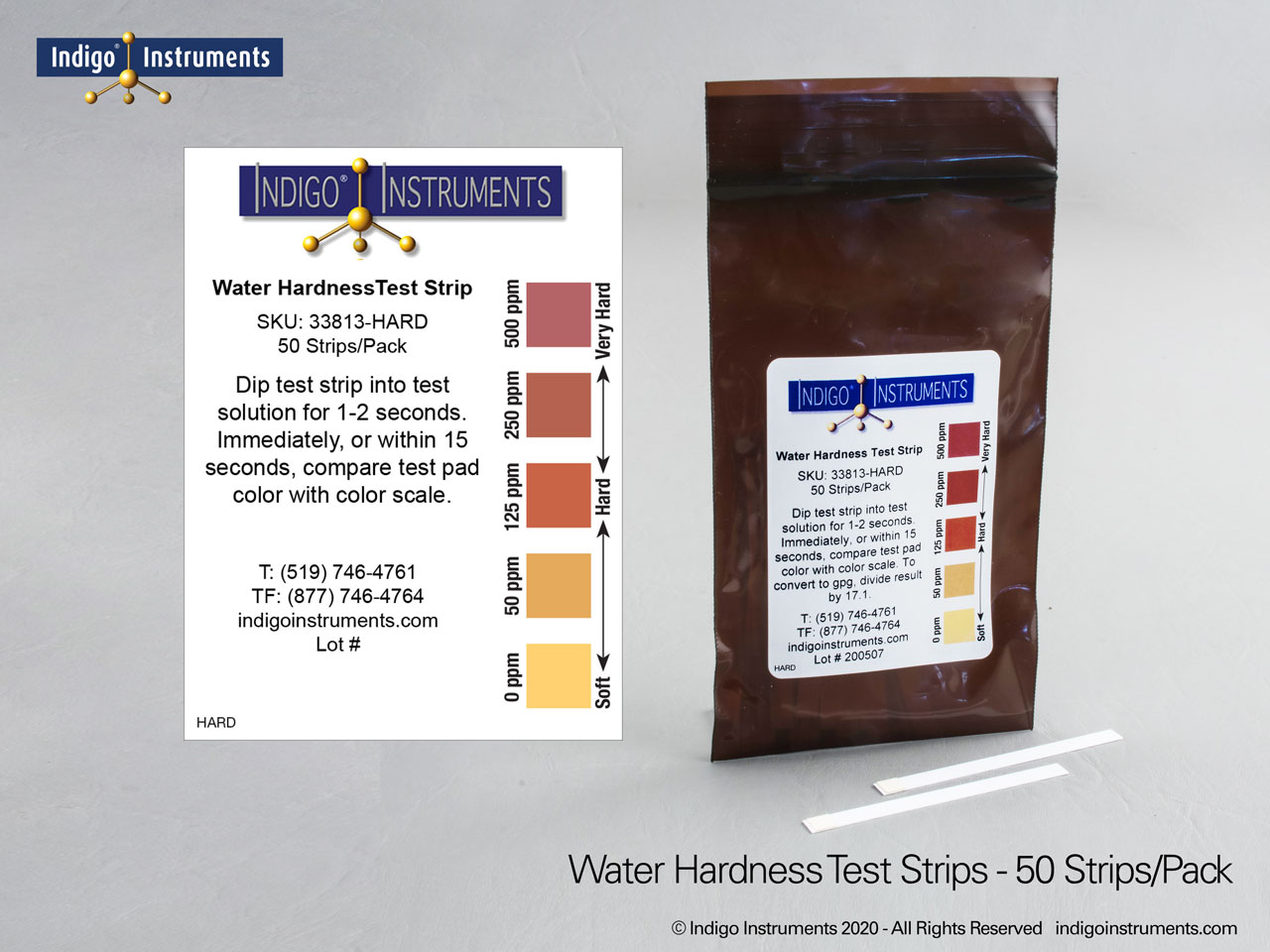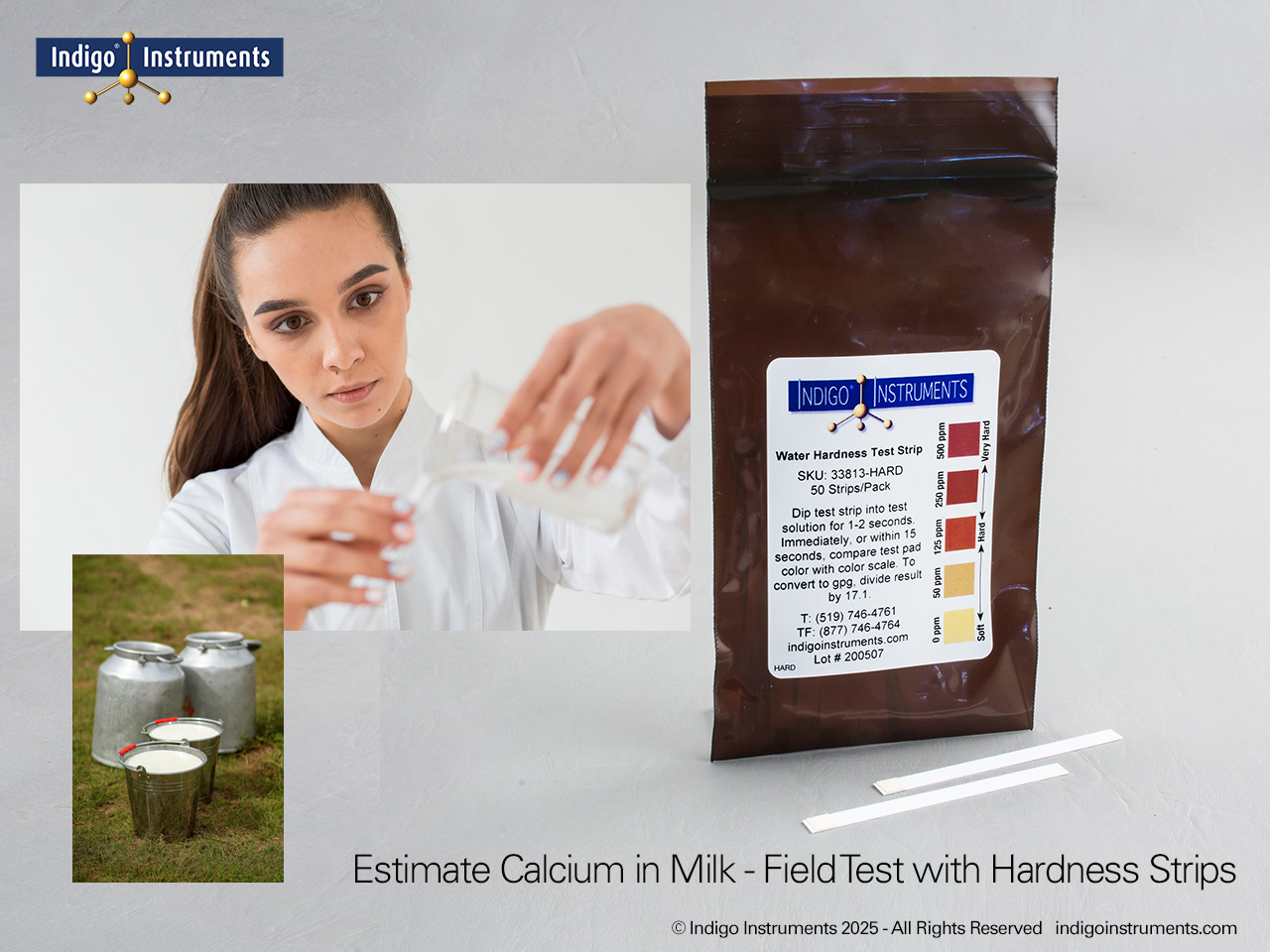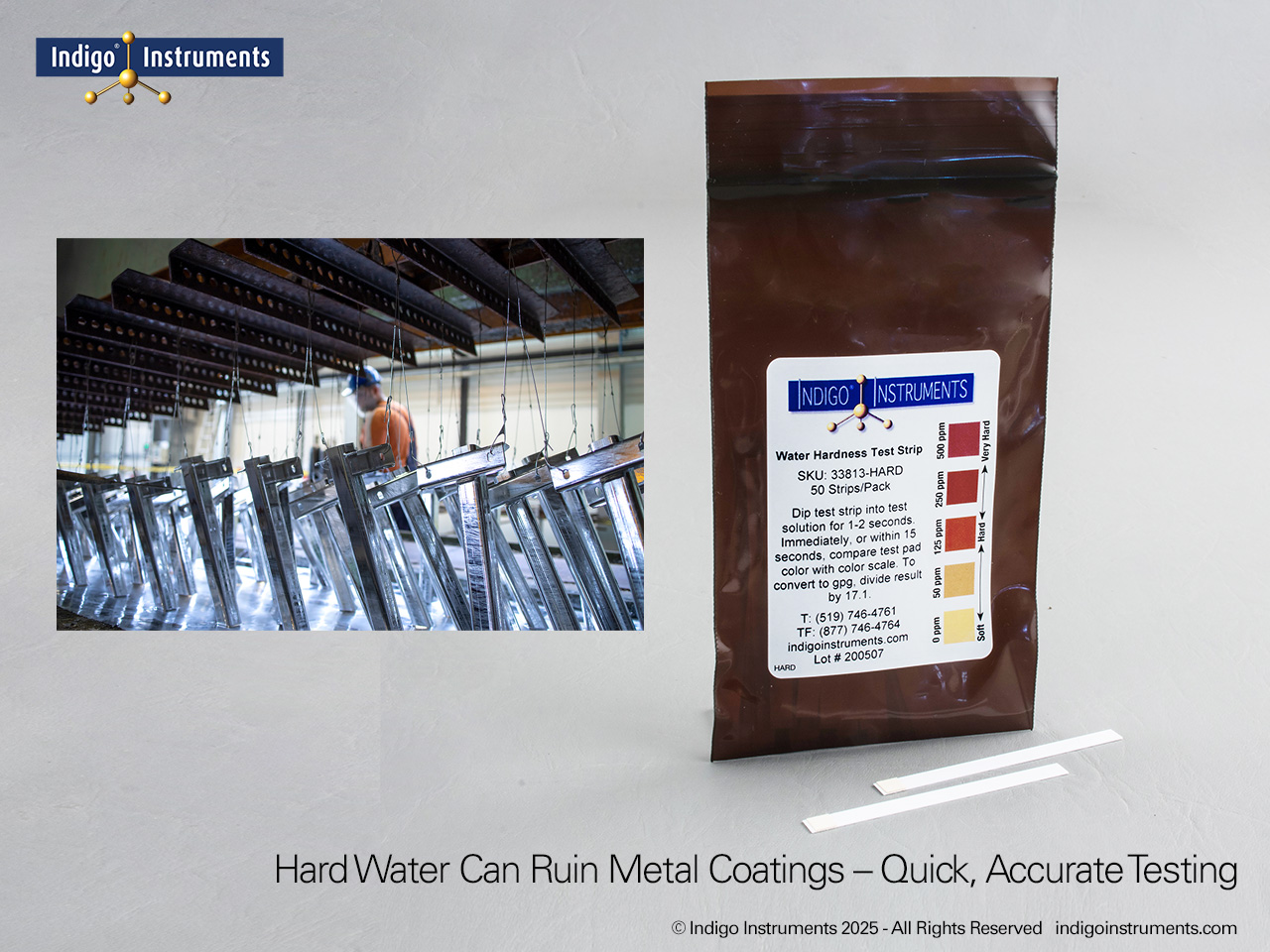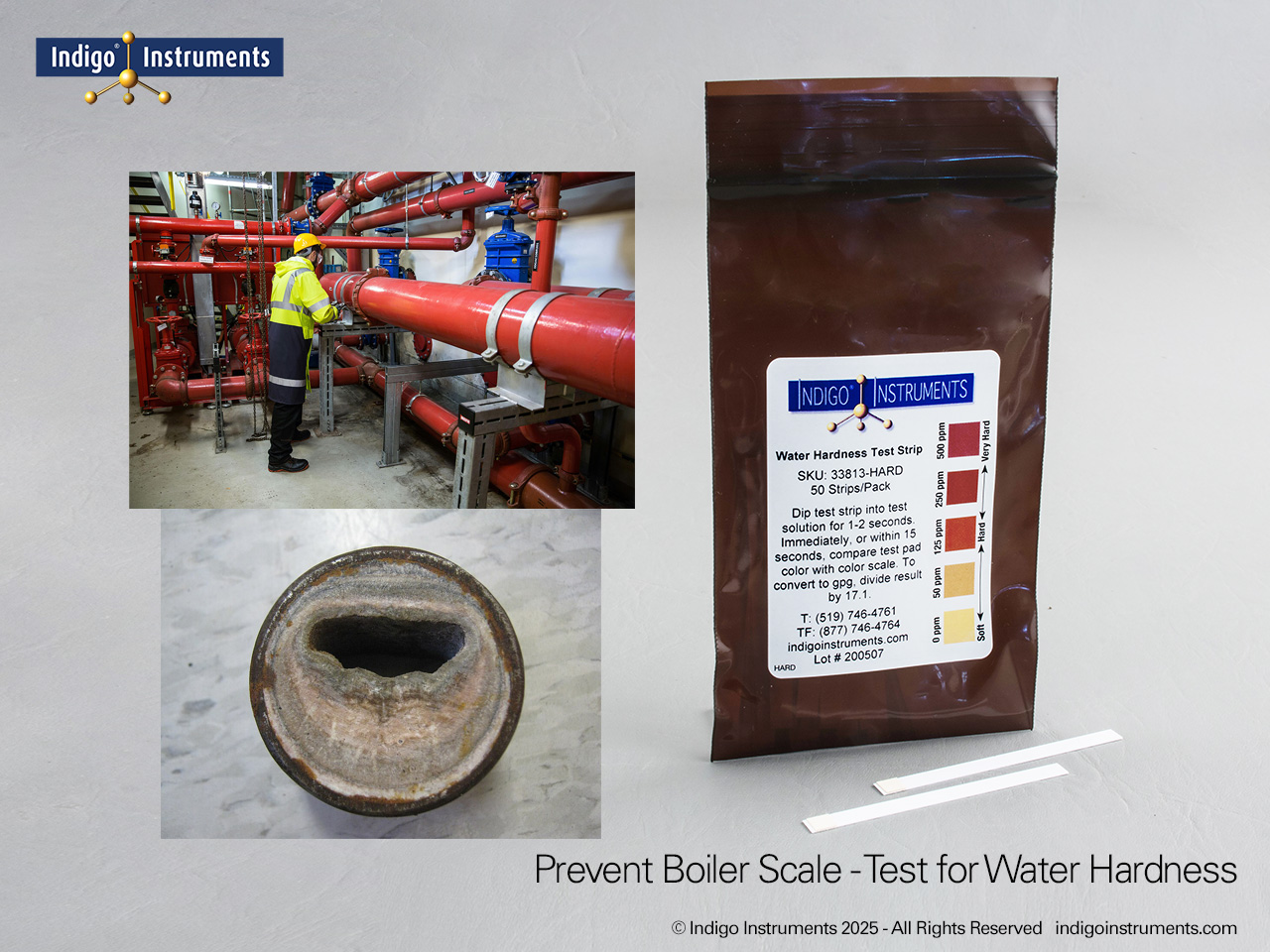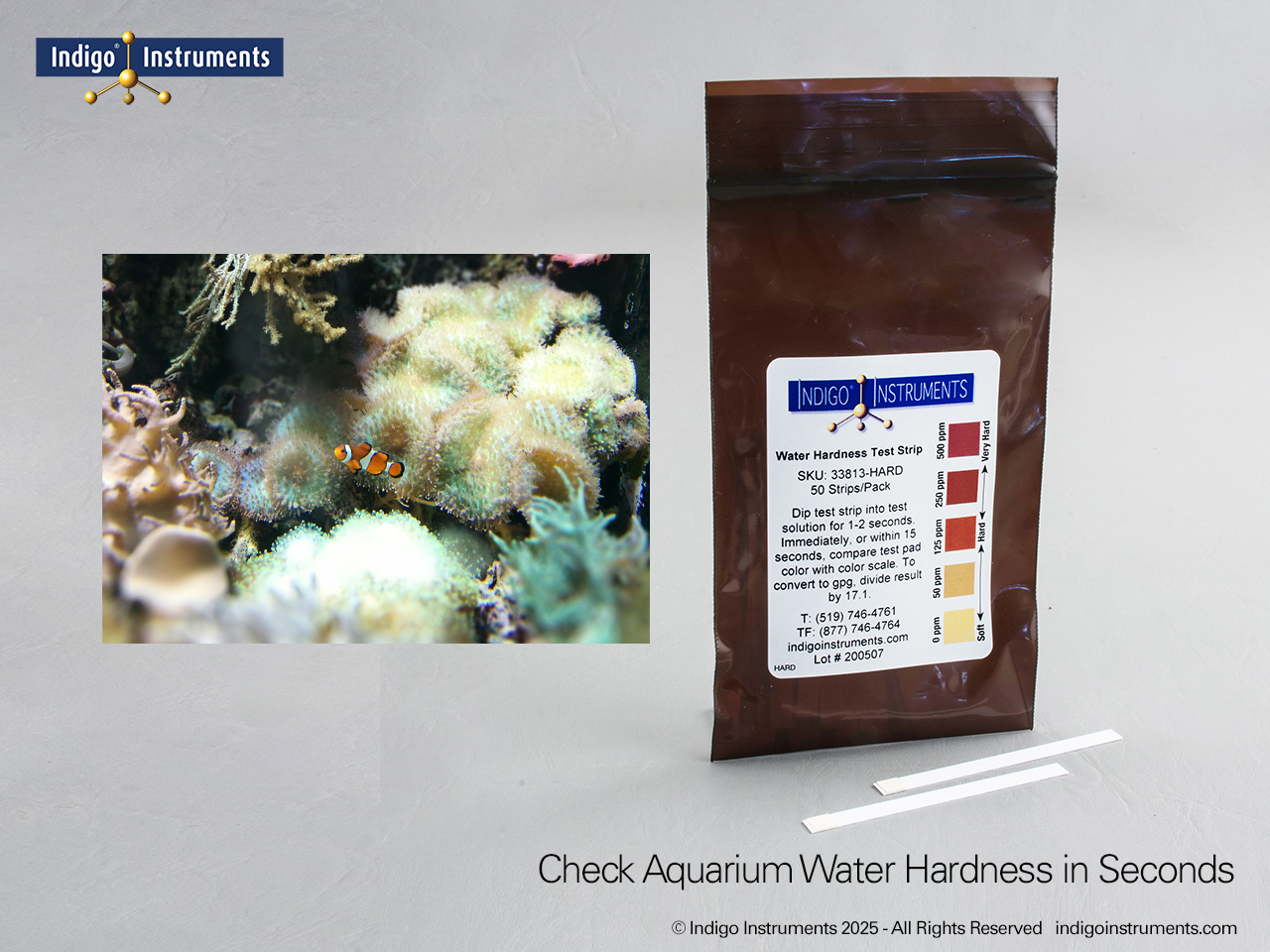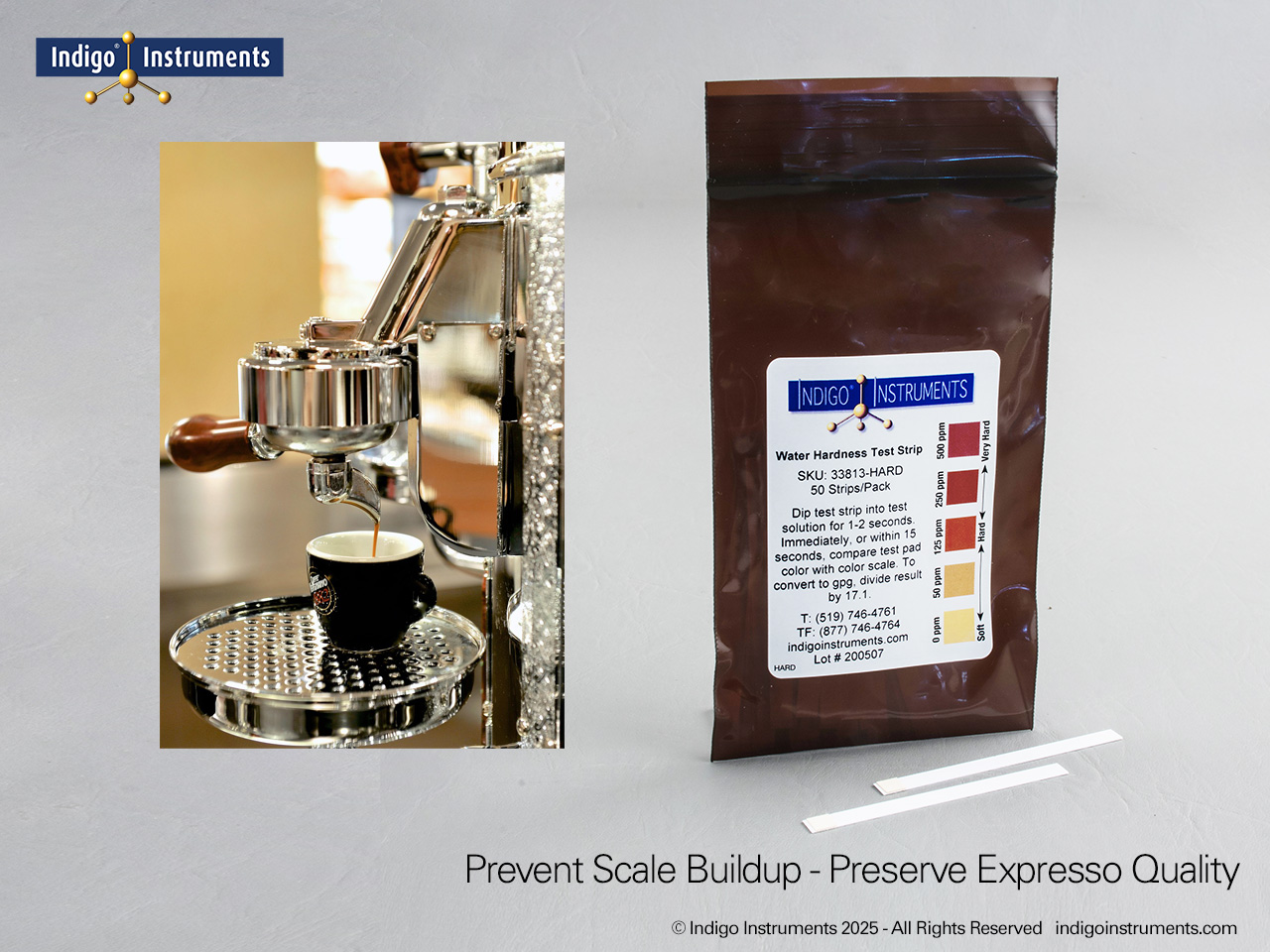Well Water Hardness Testing
SKU: 33813-Hard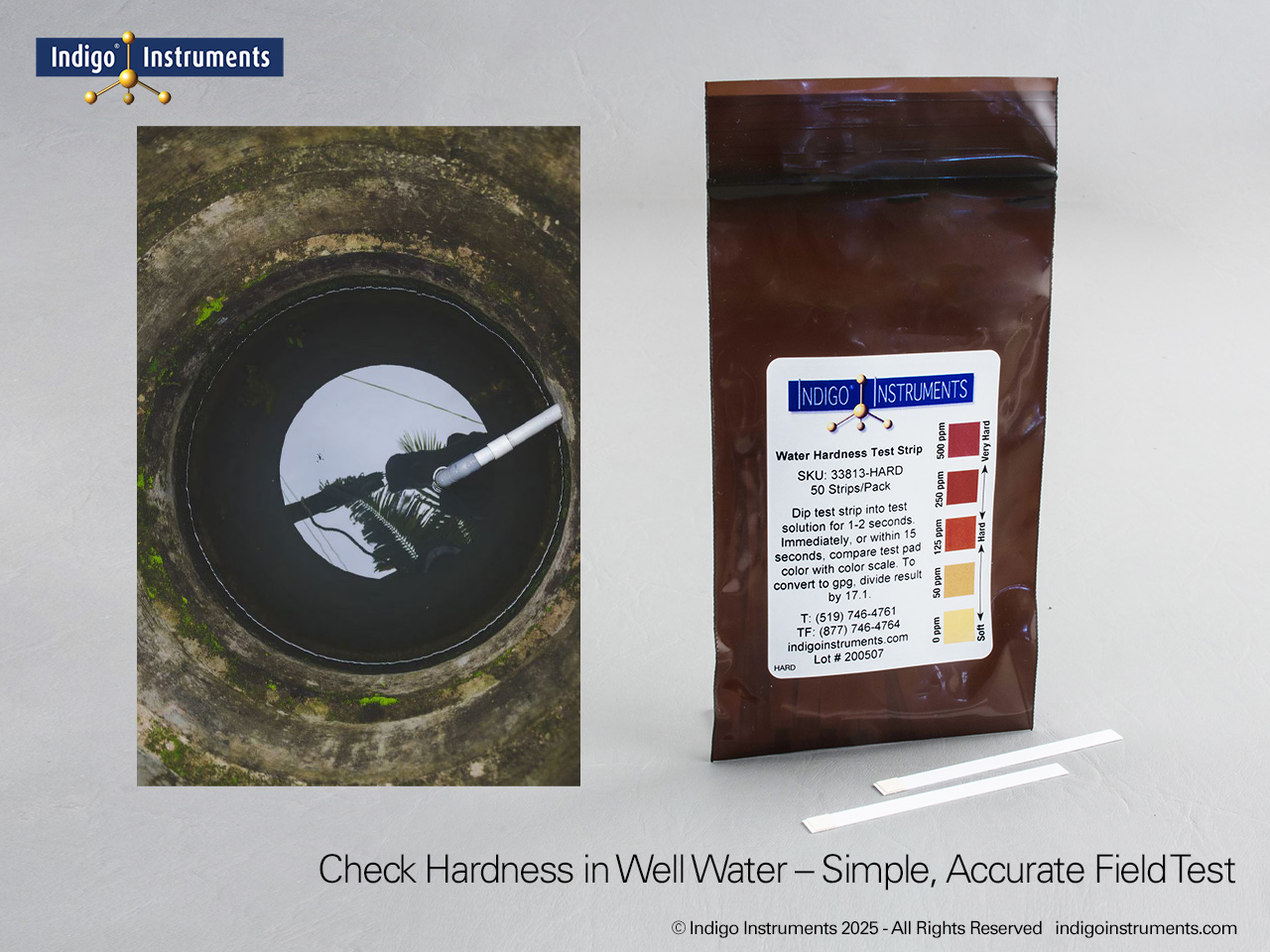
Check calcium and magnesium levels in well or groundwater using Indigo® water hardness test strips. Understand scaling risks and mineral content in rural or off-grid water supplies.
Private wells and cottage water systems often draw from mineral-rich aquifers, where groundwater hardness depends on the geology of the surrounding rock. Calcium and magnesium ions dissolve from limestone and dolomite, producing hard water that can lead to scale buildup in pipes, kettles, and water heaters. Indigo® water hardness test strips offer a fast, visual way to estimate mineral concentration without sending samples to a lab. Even a simple check can reveal when it’s time to regenerate a softener or flush a system to prevent long-term deposits.
